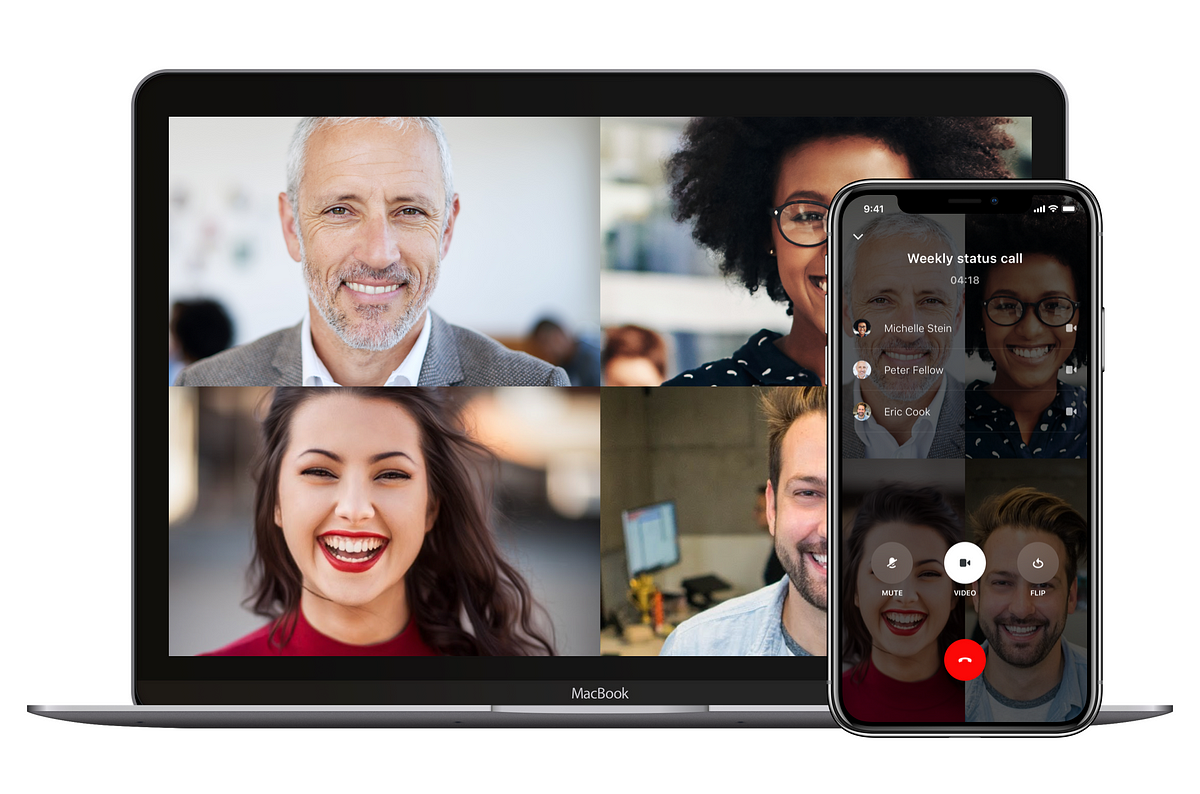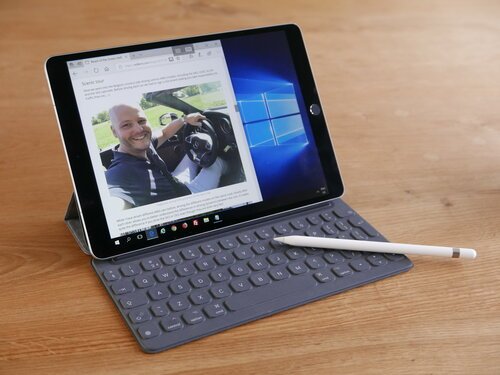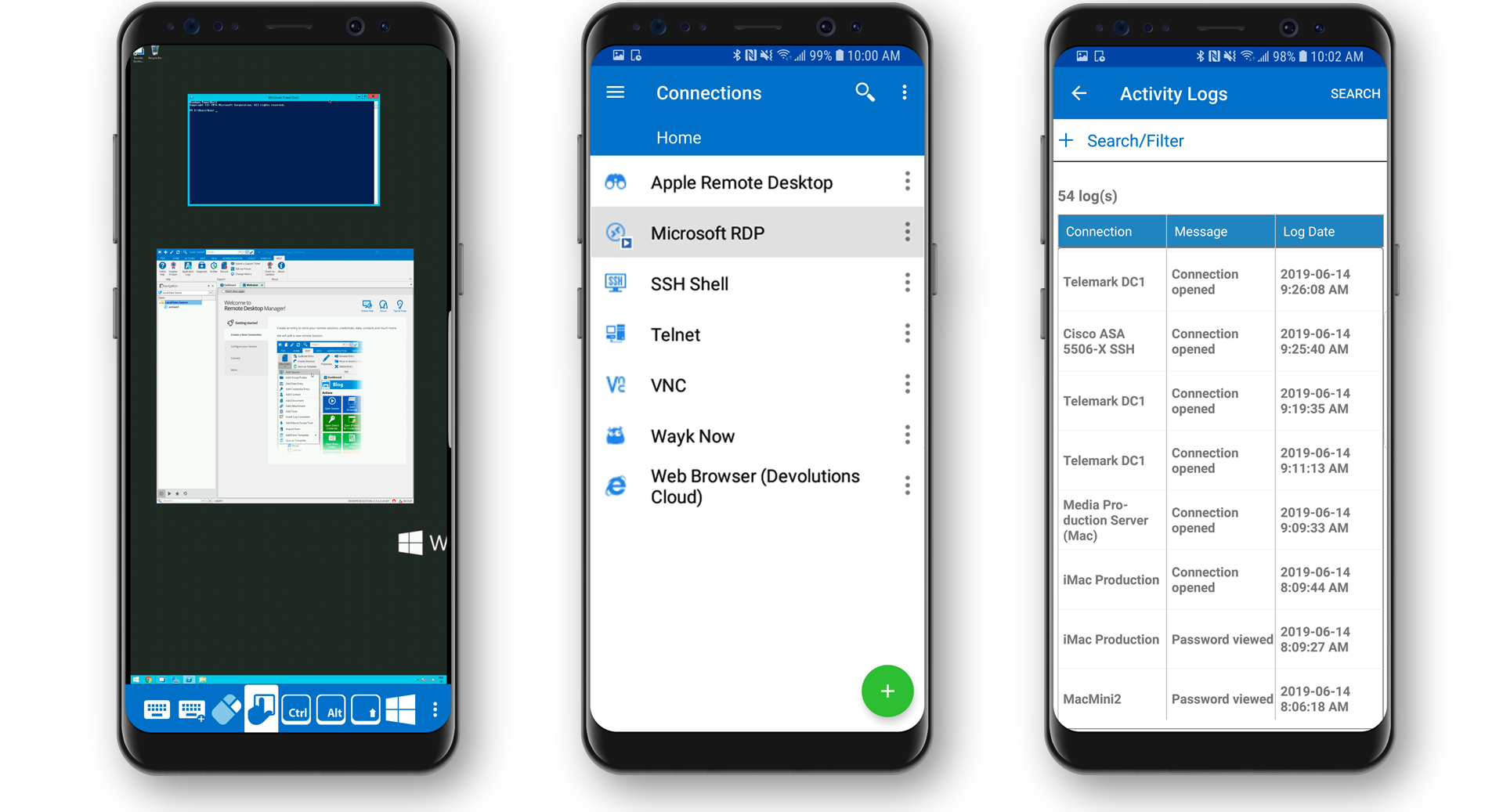As an alternative to the built-in Remote Desktop Connection tool, you can use the Microsoft Remote Desktop app in Windows 10. Install the app from the Microsoft Store and launch it. 2 days ago Maintain privacy during your remote session with the Blank Host Screen function in RemotePC. It blanks out your remote desktop screen, thus by preventing others from glancing on your activities. Lock your computer or perform other task manager operations in Windows and Force Quit operations in Mac using the Ctrl-Alt-Del function.

In computing, the term remote desktop refers to a software or operating system feature that allows a personal computer's desktop environment to be run remotely on one system (usually a PC, but the concept applies equally to a server), while being displayed on a separate client device. Remote desktop applications have varying features. Some allow attaching to an existing user's session (i.e., a running desktop) and 'remote controlling', either displaying the remote control session or blanking the screen. Taking over a desktop remotely is a form of remote administration.

Overview[edit]
Remote access can also be explained as remote control of a computer by using another device connected via the internet or another network. This is widely used by many computer manufacturers and large businesses help desks for technical troubleshooting of their customer's problems.
Maintain privacy during your remote session with the Blank Host Screen function in RemotePC. It blanks out your remote desktop screen, thus by preventing others from glancing on your activities. Lock your computer or perform other task manager operations in Windows and Force Quit operations in Mac using the Ctrl-Alt-Del function. You can use Remote Desktop to connect to Windows 10 Pro and Enterprise, Windows 8.1 and 8 Enterprise and Pro, Windows 7 Professional, Enterprise, and Ultimate, and Windows Server versions newer than Windows Server 2008. You can't connect to computers running a.
Remote desktop software captures the mouse and keyboard inputs from the local computer (client) and sends them to the remote computer (server).[1] The remote computer in turn sends the display commands to the local computer. When applications with many graphics including video or 3D models need to be controlled remotely, a remote workstation software that sends the pixels rather than the display commands must be used to provide a smooth, like-local experience.
Remote desktop sharing is accomplished through a common client/server model. The client, or VNC viewer, is installed on a local computer and then connects via a network to a server component, which is installed on the remote computer. In a typical VNC session, all keystrokes and mouse clicks are registered as if the client were actually performing tasks on the end-user machine.[2]
The target computer in a remote desktop scenario is still able to access all of its core functions. Many of these core functions, including the main clipboard, can be shared between the target computer and remote desktop client.

Uses[edit]
A main use of remote desktop software is remote administration and remote implementation. This need arises when software buyers are far away from their software vendor. Most remote access software can be used for 'headless computers': instead of each computer having its own monitor, keyboard, and mouse, or using a KVM switch, one computer can have a monitor, keyboard, mouse, and remote control software, and control many headless computers. The duplicate desktop mode is useful for user support and education. Remote control software combined with telephone communication can be nearly as helpful for novice computer-users as if the support staff were actually there.
Since the advent of cloud computing remote desktop software can be housed on USB hardware devices, allowing users to connect the device to any PC connected to their network or the Internet and recreate their desktop via a connection to the cloud. This model avoids one problem with remote desktop software, which requires the local computer to be switched on at the time when the user wishes to access it remotely. (It is possible with a router with C2S VPN support, and Wake on LAN equipment, to establish a virtual private network (VPN) connection with the router over the Internet if not connected to the LAN, switch on a computer connected to the router, then connect to it.)
Remote desktop products are available in three models: hosted service, software, and appliance.
Tech support scammers use Remote Desktop software to connect to their victim's computer and will often Syskey the computer if the victim does not cooperate.
Protocols[edit]
Remote desktop protocols include the following:
- Apple Remote Desktop Protocol (ARD) – Original protocol for Apple Remote Desktop on macOS machines.
- Appliance Link Protocol (ALP) – a Sun Microsystems-specific protocol featuring audio (play and record), remote printing, remote USB, accelerated video
- HP Remote Graphics Software (RGS) – a proprietary protocol designed by Hewlett-Packard specifically for high end workstation remoting and collaboration.
- Independent Computing Architecture (ICA) – a proprietary protocol designed by Citrix Systems
- NX technology (NX) a proprietary protocol designed by NoMachine with open-source derivatives available from other forked projects.
- PC-over-IP (PCoIP) – a proprietary protocol used by VMware (licensed from Teradici)[3]
- Remote Desktop Protocol (RDP) – a Windows-specific protocol featuring audio and remote printing
- Remote Frame Buffer Protocol (RFB) – A framebuffer level cross-platform protocol that VNC is based on.
- SPICE (Simple Protocol for Independent Computing Environments) – remote-display system built for virtual environments by Qumranet, now Red Hat
- Splashtop – a high performance remote desktop protocol developed by Splashtop, fully optimized for hardware (H.264) including Intel / AMD chipsets, NVIDIA / ATI GPU & APU, Qualcomm Snapdragon, and NVIDIA Tegra. By optimizing for different profiles of media codecs, Splashtop can deliver high frame rates with low latency, and also low power consumption.
- Xpra – a protocol originally developed for forwarding X11 application seamlessly with audio, video, remote printing, etc. - extended to support Windows and macOS servers
- X Window System (X11) – a well-established cross-platform protocol mainly used for displaying local applications; X11 is network-transparent
Malicious variants[edit]
A remote access trojan (RAT, sometimes called creepware[4]) is a type of malware that controls a system through a remote network connection. While desktop sharing and remote administration have many legal uses, 'RAT' connotes criminal or malicious activity. A RAT is typically installed without the victim's knowledge, often as payload of a Trojan horse, and will try to hide its operation from the victim and from security software and other anti-virus software.[5][6][7][8][9][10]
Notable examples[edit]
- Bifrost[11]
- Blackshades[12][13]
- DarkComet[14][15]
See also[edit]
| Look up remote desktop in Wiktionary, the free dictionary. |
References[edit]
- ^'Remote Desktop Software'. ITarian.com. Retrieved 1 May 2019.
- ^Virtual Network Computing (VNC): Making Remote Desktop Sharing Possible. Businessnewsdaily.com (2013-11-07). Retrieved on 2014-02-27.
- ^'VMware Announces Strategic Licensing and Co-development Agreement with Teradici for True Remote PC User Experience Further Bolstering its vClient Initiative'. VMware News Releases. VMware. Retrieved 1 June 2013.
- ^'Creepware — Who's Watching You?'. Symantec Security Response. 10 December 2013.
- ^'Remote Server Administration Tools for Windows 7'. Microsoft TechNet. Microsoft. 4 June 2009. Retrieved 4 February 2011.,
- ^'Danger: Remote Access Trojans'. Microsoft TechNet. September 2002. Retrieved 5 February 2011.
- ^'Understanding the Windows NT Remote Access Service'. Microsoft TechNet. Microsoft. Retrieved 5 February 2011.
- ^'Netsh commands for remote access (ras)'. Microsoft TechNet. Microsoft. January 21, 2005. Retrieved 5 February 2011.
- ^'RAS Registry Modification Allowed Without Administrative Rights'. Microsoft TechNet. Microsoft. Retrieved 5 February 2011.
- ^'Computer RATS - Protecting Your Self'. HowTheyHack. July 2013. Archived from the original on 14 March 2016. Retrieved 17 July 2013.
- ^'Code Access Security and bifrost'. CodingHorror.com. 20 March 2007. Retrieved 5 February 2011.
- ^'BlackShades: Arrests in computer malware probe'. BBC News. Retrieved 20 May 2014.
- ^'Remarks Prepared for Delivery by Special Agent in Charge Leo Taddeo at Blackshades Press Conference'. fbi.gov. Federal Bureau of Investigation. Retrieved 20 May 2014.
- ^Denbow, Shawn. 'pest control: taming the rats'(PDF). Retrieved 5 March 2014.
- ^Aylward, Laura. 'Malware analysys - Dark Comet RAT'. Contextis. Archived from the original on 26 April 2014. Retrieved 5 March 2014.
| Developer(s) | Apple Inc. |
|---|---|
| Stable release | |
| Operating system | macOS |
| Type | Remote Access Software |
| License | Proprietary |
| Website | www.apple.com/remotedesktop/ |
Apple Remote Desktop (ARD) is a Macintosh application produced by Apple Inc., first released on March 14, 2002, that replaced a similar product called Apple Network Assistant.[1] Aimed at computer administrators responsible for large numbers of computers and teachers who need to assist individuals or perform group demonstrations, Apple Remote Desktop allows users to remotely control or monitor other computers over a network.
Releases[edit]
The original release, which used the User Datagram Protocol (UDP) on port 3283, allowed remote computers (running Mac OS 8.1 or later) to be observed or controlled from a computer running macOS. It also allowed remote computers to be restarted or shutdown, to have their screens locked or unlocked, or be put to sleep or awakened, all remotely. Version 1 also included simple file transfer abilities that would allow administrators to install simple applications remotely, however to install applications that required the use of an installer the administrator would have to run the installer manually through the client system's interface.
Version 1.1 (released August 20, 2002) introduced the ability to schedule remote tasks.
Remote Desktop Protocol Download
Version 1.2 (released April 2, 2003) added a number of features that were designed to ease the administration of a large number of computers. Software could now be installed remotely on a number of machines simultaneously, without using the client system's interface. The startup disk on remote computers can also be changed, setting them to boot from a NetBoot server, a Network Install image, or a partition on their own drives. The client ARD software could also now be upgraded remotely to allow administrators to take advantage of new features without having to visit each individual computer.
Apple released a minor update on December 16, 2003 that brought ARD to 1.2.4. This update concentrated on security, performance and reliability.
On June 21, 2004 Apple announced Apple Remote Desktop 2 (released in July), which was designed to use the VNC protocol (with many private extensions) instead of Apple's original ARD protocol. This allows the ARD administration software to observe and control any computer running VNC-compatible server software (such as Windows and Unix systems) not just Macs and conversely allowing standard VNC viewing software to connect to any Mac with the ARD 2 software installed and VNC access enabled. This version also uses the Transmission Control Protocol (TCP) for most functions (on ports 5900 and 5988), which is designed to be more reliable than the UDP used in ARD 1.[2] Another significant addition to ARD 2 was the Task List, that allows remote tasks to be queued and monitored, reporting their status (such as Succeeded or Failed). This release also dropped support for older versions of the Mac OS, requiring 10.2.8 or higher.
On October 11, 2004 Apple released version 2.1 which improved on a number of existing features while adding the ability to view observed or controlled computers in full screen, the ability to see the displays of computers with more than one monitor and support for mouse right-click and scroll-wheels.[3]
On April 29, 2005 Apple released version 2.2 which added support for Mac OS X 10.4 along with several other bug-fixes and improvements to reliability.[4]
On April 11, 2006 Apple released version 3.0 which is now a Universal Binary and features improved software upgrade functionality, Spotlight searching, as well as increased throughput and encryption for file transfers, and Automator support.
On November 16, 2006 Apple released version 3.1 which provides support for the new Intel-based Xserve Lights Out Management feature.
On October 18, 2007 Apple released version 3.2 which introduced Mac OS X 10.5 support and compatibility for third party VNC viewers and servers.

On August 20, 2009 Apple released version 3.3 which fixed many bugs and allowed function keys and key combinations to be sent to the remote computer instead of the local machine.[5]
On January 6, 2011 Apple released version 3.4 which provides compatibility with the Mac App Store.[6]
On July 20, 2011 Apple released version 3.5 which provides compatibility with Mac OS X 10.7.[7]
On October 22, 2013 Apple released version 3.7 which provides compatibility with OS X 10.9, multiple monitors, and enhancements to remote copy/paste.[8]
On January 27, 2015 Apple released version 3.8, which primarily added support for OS X 10.10, while also including various user interface improvements, a new icon, stability improvements and the ability to update the application using the Mac App Store, even if the application was not originally installed from that source. This version now requires OS X 10.9 or above.[9]
On February 21, 2017, Apple released version 3.9, which heightened communications security between local and remote computers (including a Preferences checkbox to allow communication with pre-3.9 clients), added support for the MacBook Pro TouchBar, addressed various stability issues, allowed the user to export and import an encrypted list of computers with user credentials, and debuted the ability to use an 'Assistance Cursor' to call attention to items for the remote user. This version now requires OS X/macOS 10.10.5 or later.[10]
Encryption[edit]
Prior to version 3, ARD encrypted only passwords, mouse events and keystrokes; and not desktop graphics or file transfers. Apple therefore recommended that ARD traffic crossing a public network should be tunnelled through a VPN, to avoid the possibility of someone eavesdropping on ARD sessions.[11]

ARD 3.0 has the option of using AES 128 bit, the same as a basic SSH server.
ARD 3.9 included as yet unspecified enhancements to communications security that made the native mode incompatible with previous-version clients. A Preferences checkbox was provided in the Apple Remote Desktop app to explicitly allow communications with older clients. ARD 3.9.2 made the use of this checkbox optional for seeing clients in the list.[10]
Legal[edit]
In November 2017, the United States International Trade Commission announced an investigation into allegations of patent infringement with regard to Apple's remote desktop technology. Aqua Connect, a company that builds remote desktop software, has claimed that Apple infringed on two of its patents. [12]
Restrictions[edit]
ARD does not support reverse connections to listening VNC viewers.[citation needed]
See also[edit]
References[edit]
- ^Network Assistant 4.0.3 available - Macworld
- ^'Well known TCP and UDP ports used by Apple software products'. docs.info.apple.com. October 18, 2011. Retrieved January 12, 2012.
- ^'About the Apple Remote Desktop 2.1 Update'. docs.info.apple.com. July 28, 2011. Retrieved January 12, 2012.
- ^'About the Apple Remote Desktop 2.2 Update'. docs.info.apple.com. August 26, 2011. Retrieved January 12, 2012.
- ^'About Apple Remote Desktop 3.3'. Support.apple.com. September 16, 2009. Retrieved January 12, 2012.
- ^'About Apple Remote Desktop 3.4'. Apple Inc. January 6, 2011. Retrieved January 12, 2012.
- ^'About Apple Remote Desktop 3.5'. Apple Inc. July 20, 2011. Retrieved January 12, 2012.
- ^'About Apple Remote Desktop 3.7'. Apple Inc. July 26, 2016. Retrieved October 26, 2019.
- ^About Remote Desktop Admin 3.8 - Apple Support
- ^ ab'About Apple Remote Desktop Client and Admin'. Apple Support. Retrieved April 1, 2017.
- ^'LL0157.book'(PDF). Retrieved December 24, 2009.
- ^Orlowski, Andrew (November 15, 2017). 'US trade cops agree to investigate Apple's 'embrace and extend''. Retrieved November 16, 2017.
External links[edit]
Remote Desktop Protocol Error
